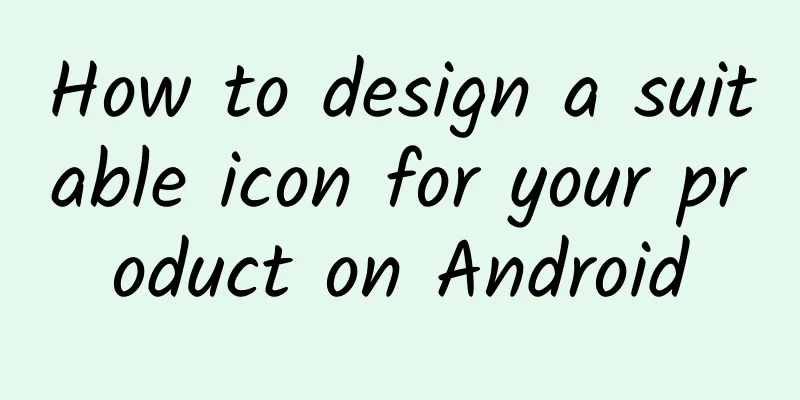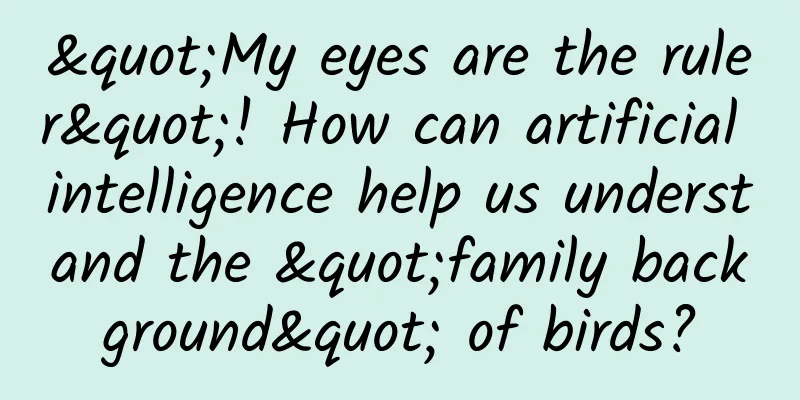Comparing Apple Watch and Google Glass: Can the latter teach the former something?

|
It's hard not to hear about the Apple Watch these days. When the smartwatch was unveiled in early March, it was covered in a ton of news. Journalists blogged about every stage of the event, and Apple fans discussed the smartwatch via blogs, Twitter, and YouTube videos. Just in case there's still someone in the world who doesn't know about this device, Apple's latest iOS operating system automatically embeds the Apple Watch app on millions of iPhones. The app includes an Apple Watch ad, a 10-minute video with chief designer Jony Ive explaining the Apple Watch, and a link to the upcoming Apple Watch app section on the App Store. Don't worry if the watch doesn't start shipping by the end of April. As Apple prepares to enter the new product market of wearable devices, another Silicon Valley tech giant, Google (10 miles north of Apple), has quietly stopped production of its most anticipated wearable device, smart glasses. Google has suspended production of Google Glass pending a redesign of the product. Google Glass has temporarily withdrawn from the market after two years on the market. The device was initially released to an invited group of testers that Google calls "Explorers" and then to the general public, where it received mixed reviews. But Google says it's not giving up on the smart glasses just yet. "We will continue to develop Google Glass, and customers will see a new version of Google Glass," the Google Glass team said in a letter posted on Google Plus on January 15. "For now, no peeking." In the story of these two wearable devices, two competing technology giants, both known for their emphasis on innovation and deep pockets, have taken very different approaches when entering new product markets. So far, Google Glass has failed to attract public interest and even faces privacy issues due to its video recording function. In fact, Google's strategy for launching smart glasses has sounded a warning bell for other companies seeking to enter the wearable device market. While Apple may be a master at marketing , this is its first entry into the smartwatch market and it can learn from Google's mistakes. Apple's strategy is different from Google's. "Both devices were launched with great fanfare and were talked about by interested companies, but they are very different in every way," said Peter Fader, professor of marketing at Harvard Business School and co-director of the Wharton Customer Analytics Initiative. "Apple has combined two different technologies that we know about - the watch and the smartphone. When the two come together, the whole is greater than the sum of its parts." Google Glass is a different story. "There's nothing about Google Glass that we can understand. You could say it's a computer or a smartphone combined with glasses," says Fader, whose son owns a pair of Glasses. "But the functionality and the way you wear it and the experience you get from using it are very different from using glasses or using a smartphone." Google Glass originally had no lenses, just frames. On one side of the top edge of the glasses was a tiny computer screen that activated when the wearer tilted their head or tapped the frame. Users could use voice commands or tap and swipe a touchpad on the side of the frame to scroll through the screen or perform actions. But beyond novelty, Glass's positioning was unclear: Why would anyone want to wear a computer on their face? "We never understood why it existed," Fader says. "Sadly, I think it could have been a huge success, but Google didn't manage the development and launch of this product properly. They never gave it a chance -- and it's really hard to undo the negatives." Fader said that since Glass is a new product to most consumers, it should be released gradually. Fader believes that Google should learn from the promotion strategy adopted when the mobile phone first entered the market in the 1980s: first sell it to professionals with mobile work needs, such as real estate agents and doctors, to meet their professional needs; then expand to the general public. A phased rollout would allow Google to continue developing the technology and reduce the cost of the product, which is priced at $1,500. Google could then gradually build buzz about the product, from users to experts to high-end consumers and then to the mass market, to get more consumers to adopt it. "Google Glass is so different that it requires a completely different strategy." Fader compares Google Glass to the Segway, an innovative battery-powered two-wheeled electric vehicle that users move by shifting their weight. The Segway was first introduced on ABC's Good Morning America in 2001 and then immediately released to the general public without first confirming its usefulness to consumers. The Segway's initial price of $5,000 was prohibitive for consumers, even though it used revolutionary technology. Fader believed the Segway was an unfamiliar product that should be introduced in phases while the company worked to keep costs down. “It shouldn’t have been on Good Morning America with (TV hosts) Charlie Gibson and Diane Sawyer driving around on it,” Fader said. However, the Segway faced another insurmountable difficulty at the time: it made the person riding it look strange, as if they were standing on a rolling platform. Wired magazine once called it a "ridiculous" high-tech "scooter". The Hartford Courant, a local newspaper in Connecticut, said it looked like a "rotating lawn mower." A notable exception to the sequential rollout strategy is the iPhone, Fader points out. Apple introduced the product to the public all at once. Even though it operated very differently than most phones at the time, consumers bought into it because they saw that the iPhone could replace their MP3 music players, video players and cameras while also making calls, surfing the Internet and sending text messages. In addition, mobile apps expanded the smartphone's capabilities, turning it into a pedometer, flashlight, compass and camcorder, among other tools. Fader added that Apple's excellent marketing ability and the "halo and inherent trust" around the company have driven the success of iPhone sales. In addition, Apple's large number of loyal fans are also one of the factors for the success of the iPhone. "When Apple launches a product, people will line up in the street to be the first to buy it. No company in the world can match this," he said. "If (Apple) tells me this thing is good, I am willing to try it." “It’s just too bulky” Management professor David Hsu believes that Apple is smart in positioning the Apple Watch not just as a high-tech timepiece but also as a fashion accessory, which is important for wearable devices because, unlike smartphones, wearable devices are not something that can be tucked into a trouser pocket or bag, but are part of the user's overall image. Google is counting on the profits from its revolutionary technology, but it has failed to take into account that most people don’t want to wear something that makes them look silly. Last year, Google tried to reverse its image by partnering with luxury eyewear maker Luxottica to put the technology on Ray-Ban and Oakley glasses. Even so, Luxottica founder Leonardo Del Vecchio told the Financial Times last fall: “I would be embarrassed to walk around with that on my face.” David Hsu likes to keep up with the latest technology trends. He said he tried Google Glass but didn't like it. "It's too bulky, and it's really unacceptable from a social perspective. You have to put your finger on the glasses and then tap lightly from the outside to browse pictures or screens, which looks really ridiculous." Google Glass has also become an object of social satire. The Saturday Night Live show even drew a sketch to make fun of the concept of Google Glass as a computer worn on the head. In contrast, Apple designed the Apple Watch to look like a traditional watch, even down to the round crown on the side. The crown of the Apple Watch is "reassuring," said David Hsu, "Many times when companies launch new products, they want to add some familiar elements." In fact, at the Apple Watch launch event, Apple CEO Tim Cook spent some time introducing the design of the smartwatch and the technology behind it. Apple Watch prices range from $349 to $17,000, with a variety of rubber, leather or stainless steel straps to choose from, some of which are very eye-catching on the wrist. This smartwatch even has a luxury model in 18K gold. Users can change the dial style according to their preferences, just like changing the wallpaper of a smartphone. There are also multiple choices for dial styles, including Mickey Mouse, space scenes and classic dials. It’s not that every wearable device has to be fashion-forward. David Hsu remembers a time when many people liked to hang Bluetooth headphones on their ears to answer and make calls without taking out their phones. “People walked around wearing Bluetooth headphones, as if they were talking to themselves,” he said. Bluetooth headsets looked weird but were useful, so people got used to seeing them in public. But "Google Glass never got over that problem," Hsu added. "It didn't go mainstream, and it wasn't even clear that it wanted to go mainstream." David Hsu believes that Apple's positioning of the Apple Watch as a fashion accessory has another benefit: it gives consumers another reason to buy it. If the Apple Watch is marketed for its technological advantages, consumers may ask, many of its functions are already available on smartphones, why should I buy another digital device? But fashion trends are another matter. "Maybe when you are getting dressed, you will find that you feel something is missing without fashion accessories," he said. "This is more of a fashion point of view and personality, which largely breaks the tradition of Apple's computer products." It's time to compete Competitors have clearly taken notice of the fashion side of the Apple Watch. Just days after the Apple Watch was unveiled, Swiss luxury watchmaker Tag Heuer announced it was developing a smartwatch in partnership with Intel and Google's Android Wear, an Android operating system designed specifically for wearable devices. David Singleton, director of engineering at Android Wear, said the collaboration will create "a better, more beautiful, smarter watch." It's worth noting that Google's former subsidiary Motorola Mobility released a smartwatch called the Moto 360, which some technology commentators compared to a "hockey puck" on the wrist. Google is also improving its design capabilities. In January, Google reportedly put the Google Glass division under the charge of former Apple CEO Tony Fadell. Fadell joined Google after Google acquired smart device maker Nest. Before founding Nest, Fadell led the Apple team that developed the first 18 generations of iPods and the first three generations of iPhones. Fadell will show his wizardry and completely transform Google Glass. David Xu pointed out that another major problem with Google Glass is that it has not made substantial improvements in its upgrades. For example, the most significant change between the second generation and the first generation is that the memory has doubled to 2G and it allows the use of prescription lenses. Instead, "Apple's normal approach is to keep the price stable with each version, but significantly increase the features and technical specifications," said David Hsu. He hopes to continue the same strategy with the Apple Watch, which has worked well for the iPhone. "I think this strategy will work in this product category as well, and also be committed to upgrading the device every year." In addition, Glass was released without a range of apps that could convince people to buy it for its many uses, especially since the device is so expensive. "They never really got all the apps to work," Fader said. In addition, many websites were not compatible with the Glass screen and did not display properly. "Some features weren't configured properly, some features didn't work at all... They never built a complete system," Fader said, "and because they rushed it to market, the functionality was very limited." According to a March 19 article in Vanity Fair magazine, at the recent South by Southwest media and arts conference held in Austin, Texas, Astor Taylor, head of Google X, who is responsible for the development of Google Glass, admitted that Google made a mistake by launching the product before it was completed, and it is no wonder that users are disappointed. Apple, by contrast, took its time developing the Apple Watch and was in no rush to bring it to market. But when it was released, it came with many of the apps that users were familiar with and that sync with their iPhones. The Apple Watch can answer calls, display messages and notifications, track physical activity and tell time, but it can also book hotel rooms, check in at the airport, encourage exercise, act as a remote control and even send doodles to other users. "The whole ecosystem is already complete," Fader said. Of course, the Apple Watch has its limitations. David Hsu believes that one of its biggest drawbacks is its battery life. The watch can only last for 18 hours on a single charge due to its many features, so users must be prepared to charge it every day. In contrast, the Pebble smartphone he currently uses only needs to be charged every five days. Another big disadvantage is cost. While the Apple Watch is available in a variety of price options, even at the lowest price of $349, it is generally more expensive than many competitors. Some models of Jawbone smartwatches can be purchased for less than $100, while the Moto 360 starts at $250. Smartwatches such as the Sony SmartWatch 3, Asus Zen Watch and Samsung Gear Live all hover around the $200 mark. However, the Apple Watch does have many more features than its competitors. David Hsu said he hoped the Apple Watch would offer more health features, and that Pebble's activity tracker encouraged him to change his behavior - if the tracker showed that he was sitting too long, he would move more. He had expected the Apple Watch to offer more detailed features so that he could track his health more closely. But he still planned to buy an Apple Watch. "I was disappointed, like many people, that it didn't have more health apps when it was launched," he said. Killer app? As attractive as the Apple Watch may be, it still faces the challenge of convincing people to adopt it, a dilemma faced by many wearable devices. Currently, only 1% to 2% of American adults own a wearable device, while 65% of adults own a smartphone, said Mitesh Patel, a professor of health management at Harvard Business School and professor of medicine at the Perelman School of Medicine at Pennsylvania State University. According to Patel, health applications could help increase the adoption of wearables. "Everyone cares about their health, and if these devices can help in that regard, it could significantly increase adoption," he said. "However, there are a lot of challenges, including affordability, convenience, and remembering to wear them. There are also many questions to be answered about their impact. But I do think there is a lot of potential for wearables to take advantage of the health opportunity." But wearables face a challenge. More than half of wearable users stop using them within six months, Patel added. “Perhaps with multi-function watches, people might be willing to wear them, but we’ll have to wait and see.” To ensure long-term use, wearables marketed as health care must successfully help users change their behavior. “I think wearables are showing their potential in fitness and health,” he said. “The question is, will it improve your health in the long run? We don’t know, but at least they are playing a role in monitoring your health, and I think that’s the strength of wearables.” Jeff Voigt, head of medical device consulting firm in Ridgewood, New Jersey, believes that a major opportunity for wearable devices is that they can help people deal with chronic diseases. For example, wearable devices can monitor the daily life of diabetics and send relevant data to doctors for analysis. "I think there is a lot of potential for this," he said. But wearable devices must be easy to use and protect patient privacy, and Voigt believes that these problems will eventually be solved. Wall Street is currently bullish on the Apple Watch. According to a March 10 article in the Wall Street Journal, the market estimates that the smartwatch will ship between 10 million and 40 million units in 2015. This number will easily beat Android Wear smartwatches, which shipped only 720,000 units worldwide last year, according to data from analyst firm Canalys, while global smart wristband shipments totaled 4.6 million units. Apple can make a big splash in this market. The company said that the Apple Watch is expected to "greatly expand the market space for smart wristbands and wearable devices as a whole." Fader thinks it will be hard for the Apple Watch to fail. "It can't fail miserably," he says. "It may not be a huge success, but nobody's going to look at the Apple Watch and say, 'What the hell were they thinking?' Whereas with Google Glass, nobody's going to say, 'Oh my god, that's a great idea!'" As a winner of Toutiao's Qingyun Plan and Baijiahao's Bai+ Plan, the 2019 Baidu Digital Author of the Year, the Baijiahao's Most Popular Author in the Technology Field, the 2019 Sogou Technology and Culture Author, and the 2021 Baijiahao Quarterly Influential Creator, he has won many awards, including the 2013 Sohu Best Industry Media Person, the 2015 China New Media Entrepreneurship Competition Beijing Third Place, the 2015 Guangmang Experience Award, the 2015 China New Media Entrepreneurship Competition Finals Third Place, and the 2018 Baidu Dynamic Annual Powerful Celebrity. |
<<: CIST: Survey finds 62% of game studios use AI in development
>>: Can I use WiFi to make calls when there is no signal?
Recommend
200,000-level domestically produced large seven-seater, the new Tang DM-i and the Trumpchi ES9, which one do you choose?
On October 25, the 2025 BYD Tang DM-i was officia...
vivo platform practice exploration journey-platform product series 01
Author | Yang Yang, vivo Internet Platform Produc...
2022 Metaverse Marketing Myth
The metaverse can be generally understood as a vi...
Price inquiry for the production of Panzhihua fast food mini program. How much does it cost to produce Panzhihua fast food mini program?
In order to better penetrate into various industr...
"Lice" have coexisted with us for tens of millions of years, so why haven't we seen them in recent years?
When talking about lice, everyone may feel their ...
The 12 Silicon Valley tech giants who pay the most attention to China
No one in the current technology industry can ign...
Ford Motor: Ford Ranger sales reached 2,402 in January 2024, topping the 150,000+ pickup truck market
According to media reports, Ford Ranger sales rea...
Take the initiative in your career: build your personal brand and let opportunities come to you
Course Catalog: 01 Make sure what you earn is wor...
Where does the held urine go?
Audit expert: Zeng Ling Deputy Chief Physician of...
International Day for the Elimination of Violence against Women | Bravely Say “No” and Refuse to Be Harmed
"He's a PhD, and he didn't hit you, ...
Operator subsidy policy adjustment: mobile phone manufacturers face great challenges
Under the dual effects of reducing marketing expe...
A big screen makes you look stupid, and a small screen makes you look poor. So what is the appropriate size for a mobile phone screen?
Since the beginning of 2015, rumors about the lau...
Will the next iPhone have an OLED screen? This Japanese company is the key
Next year, the iPhone will be 10 years old, and A...
What differentiates people from the north and south? Dumplings or tofu pudding? Neither! Actually, it’s this!
In middle school geography class, we all learned ...
Panshi SEO Training: Are original articles really effective for SEO?
I have seen many articles about the importance of...









